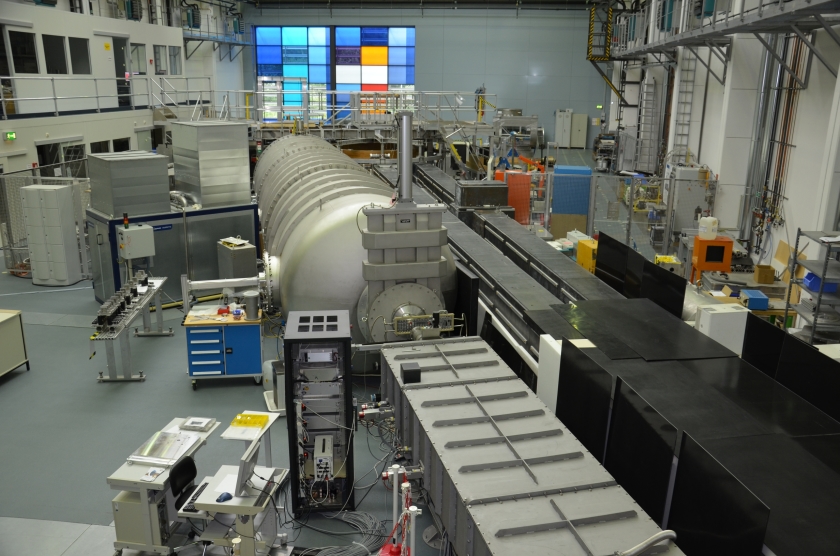Neutron instrument VSANS will move to Penn State University, USA

The VSANS instrument (here in the neutron hall at BER II) will move to Penn State University. © A. Kubatzki/HZB
At the end of 2019, the Berlin neutron source BER II was shut down as scheduled. To ensure that the high-quality instruments can continue to be used for research, they are moving to suitable neutron sources in Germany and abroad. Now, another move has been agreed upon: The Very Small Angle Scattering Instrument (VSANS) will find a new home at the Breazeale Research Reactor at Penn State University, USA, in spring 2022.
At Penn State University, the Radiation Science & Engineering Center (RSEC) operates the Breazeale reactor, which produces neutrons for research. An expansion is now planned there to accommodate the new, very large VSANS instrument.
VSANS stands for Very Small-Angle Neutron Scattering, i.e. the scattering of neutrons at very small scattering angles. This method enables insights into colloidal systems and soft matter, but also into glasses, biomimetic structural proteins, microemulsions, flexible electronics and many other questions, from physics to biology.
"Our goal is that our excellent instruments will continue to be available for research and innovation after BER II is shut down. We are therefore very pleased that the VSANS is being reinstalled at the Breazeale reactor", says Roland Steitz, HZB. This means that the HZB experts have now found a new location for almost all neutron instruments.
"The Breazeale reactor at the Penn State RSEC will be the only university research reactor with a SANS facility in the United States," says Kenan Ünlü, director of the RSEC and professor of nuclear engineering.
arö
-
Helmholtz Institute for Polymers in Energy Applications (HIPOLE Jena) Inaugurated
On June 17, 2024, the Helmholtz Institute for Polymers in Energy Applications (HIPOLE Jena) was officially inaugurated in Jena in the presence of Wolfgang Tiefensee, Minister for Economy, Science, and Digital Society of the Free State of Thuringia. The institute was founded by the Helmholtz Center Berlin for Materials and Energy (HZB) in cooperation with the Friedrich Schiller University Jena. It is dedicated to developing sustainable polymer materials for energy technologies, which are expected to play a key role in the energy transition and support Germany’s goal of becoming climate-neutral by 2045.
-
Chilean President visits Helmholtz-Zentrum Berlin
The President of Chile, Gabriel Boric Font, visited HZB on 11 June with a delegation of 50 people. Among the highlights of the evening were the signing of a Memorandum of Understanding between the Chilean Corporation for the Promotion of Production (CORFO) and HZB and a visit to BESSY II light source.
-
A simpler way to inorganic perovskite solar cells
Inorganic perovskite solar cells made of CsPbI3 are stable over the long term and achieve good efficiencies. A team led by Prof. Antonio Abate has now analysed surfaces and interfaces of CsPbI3 films, produced under different conditions, at BESSY II. The results show that annealing in ambient air does not have an adverse effect on the optoelectronic properties of the semiconductor film, but actually results in fewer defects. This could further simplify the mass production of inorganic perovskite solar cells.
